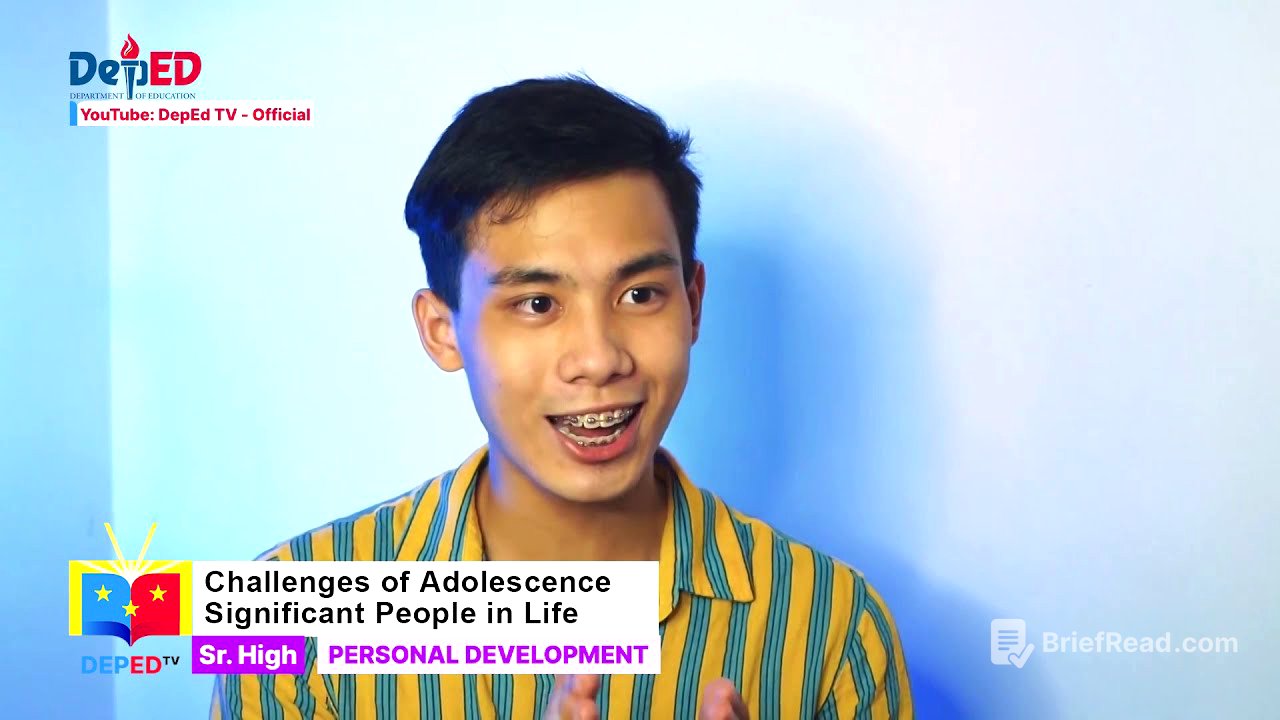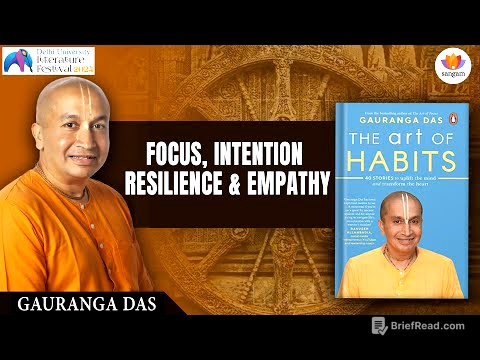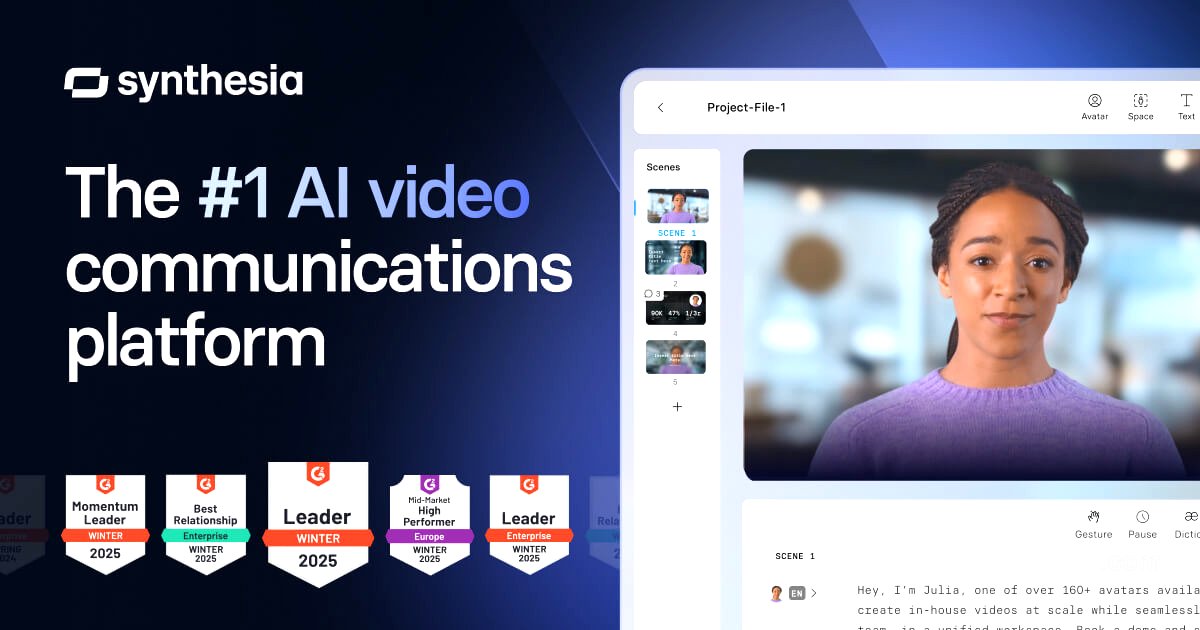TLDR;
This video discusses the developmental tasks and challenges adolescents face during the transition from childhood to adulthood. It covers biological, cognitive, psychological, and social challenges, emphasizing the importance of mental health, coping mechanisms, and support systems. The video also highlights the influence of family, peers, and teachers on personal development and encourages adolescents to recognize and appreciate the significant people in their lives.
- Adolescence is a period of significant physical, emotional, and social changes.
- Mental health is crucial during adolescence, with many conditions starting by age 14.
- Support systems and positive influences play a vital role in adolescent development.
Introduction to Adolescence [1:48]
The video introduces the challenges and developmental tasks experienced during adolescence, a period marked by significant physical and emotional changes. Adolescence is defined as the period between the onset of puberty and the beginning of adulthood, typically between the ages of 10 and 19. This transition involves dramatic physical, sexual, psychological, and social changes, all occurring simultaneously. These changes present both opportunities and risks to the health and well-being of adolescents.
Biological Challenges [5:30]
The video addresses biological challenges during adolescence, focusing on puberty and its effects. Puberty involves the release of sexual hormones, leading to stronger emotions, moods, and sexual feelings. This can result in impulsive behavior and risk-taking, such as experimenting with alcohol, driving without a license, or engaging in unsafe sexual activities.
Cognitive Challenges [6:05]
The video discusses cognitive challenges, referencing Jean Piaget's theory of cognitive development. Adolescents transition from concrete operational thinking (ages 7-11) to formal operational thinking (ages 12 and up). This enables them to think logically about abstract propositions and test hypotheses systematically. Adolescents also become more concerned with hypothetical, future, and ideological problems. Egocentrism, the inability to understand that others may have different views, is also discussed as a cognitive bias.
Psychological Challenges [8:10]
The video addresses psychological challenges, highlighting the importance of coping with identity formation and the journey from "who I am" to "this is me." It presents statistics from the World Health Organization, noting that one in six people are aged 10 to 19, and mental health conditions account for 16% of the global burden of disease and injury in this age group. Depression is a leading cause of illness and disability among adolescents, and suicide is the third leading cause of death in 15 to 19-year-olds. Risk factors include a desire for autonomy, peer pressure, exploration of sexual identity, and increased access to technology. Developing social and emotional habits, such as a healthy lifestyle, sufficient sleep, regular exercise, and coping skills, is crucial for mental well-being.
Social Challenges [11:46]
The video covers social issues such as sexual abuse, substance abuse, the influence of mass media, and the impact of social media. Adolescents may face sexual coercion through peer pressure or manipulative lines. Easy access to substances can lead to abuse, including smoking, drinking, and drug use. Social media, while beneficial for connection, can expose adolescents to cyberbullying and pornography. Responsible adolescents should be aware of these risks and ensure they are not forced into uncomfortable situations, promoting safe online navigation and media literacy.
Developmental Tasks [13:36]
The video outlines developmental tasks proposed by Professor Robert Havighurst, which are crucial for a normal transition into adulthood. These tasks include learning to get along with friends of both sexes, accepting one's physical body and keeping it healthy, becoming more self-sufficient, making decisions about marriage and family life, preparing for a job or career, acquiring a set of values to guide behavior, and becoming socially responsible. Successfully achieving these tasks leads to a smoother transition into the next stage of life.
Significant People and Personal Development [16:24]
The video emphasizes the importance of surrounding oneself with people who contribute significantly to personal development. These individuals provide a sense of belonging and security, acting as an extended family. Adolescents often choose idols from social media and their communities, drawing inspiration and positive outlooks from these role models. The video encourages viewers to reflect on the people who have influenced them and how they have contributed to their personal growth.
Influence of Family, Peers, and Teachers [18:37]
The video discusses the influence of family, peers, and teachers on personal development. Families provide knowledge of self-care, teach the value of relationships, and impart beliefs, traditions, culture, and values. Peers can teach skills in organizing tasks, working together, and giving/receiving feedback. Teachers create exciting memories and collaborative experiences in school. The video suggests activities such as expressing gratitude to influential people and identifying core values learned from them.
Conclusion and Encouragement [22:13]
The video concludes by reminding adolescents that challenges like peer pressure and low self-esteem can lead to risky behaviors. It stresses the importance of having a support system, including parents, siblings, teachers, and friends, to provide strength and advice. The video shares a quote about personal transformation and encourages viewers to share their challenges and how they overcame them, highlighting the people who helped them along the way. It ends with a positive message about self-improvement and appreciating those who bring out the best in us.









